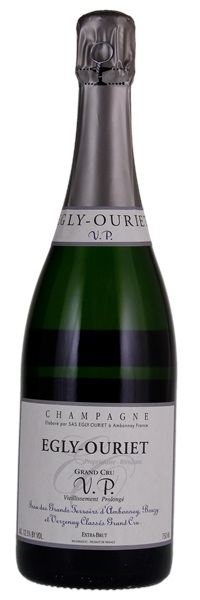
Image above is an example. To view the image of the lot, click the item number.
Estimate
A strikingly pretty and complex nose combines notes of toast, strong yeast, baked apple and soft citrus nuances. There is equally good complexity to the delicious and notably rich flavors that are supported by a vibrant effervescence...
...Brioche, baked apples, mint, crushed flowers and red stone fruits develop in the glass. As is so often the case with the Egly-Ouriet Champagnes, it is the wine's texture and overall resonance that stands out most. What a gorgeous Champagne this is...
Bright and expressive, with flavors of ripe blackberry, mandarin orange zest and whole-grain toast leaping from the glass, this is finely knit and harmonious, with a mouthwatering spiced finish.